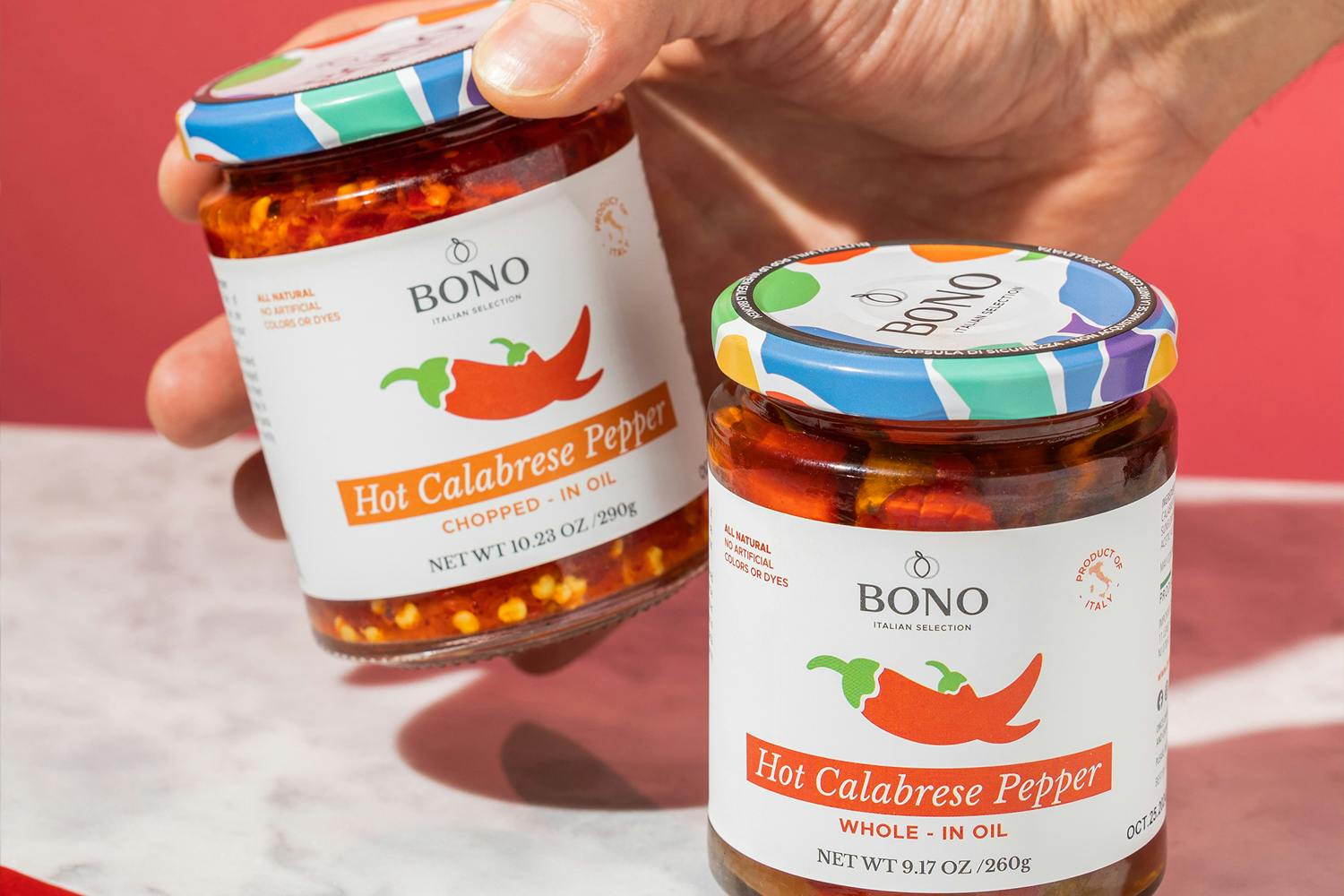
10 Rules for New Italian Food Brands in US
Top 10 Packaging Rules for Italian Brands Introducing F&B Products to the American Market
By Robert Barletta and Domingo Echague
Bringing an authentic Italian food product to the U.S. market is like preparing a perfect plate of pasta—it requires the right ingredients, a careful balance of tradition and innovation, and a strong presentation. In the ultra competitive U.S. retail landscape, packaging isn’t just a container—it’s your product’s first impression, storytelling device, and silent salesperson.
Here are the top 10 rules in a nutshell:
- Educate Clearly – Say what it is and why it’s special.
- Be Proud of “Product of Italy” – Wear it like a badge of honor.
- Show the Product – Let them see what they’re getting.
- Highlight Benefits – Make it easy to understand why it’s great.
- Design for Convenience – Americans love packaging that works for them.
- Modern Heritage – Honor tradition without the tired clichés.
- Prioritize Sustainability – Green packaging wins hearts.
- Stand Out on Shelves – Don’t get lost in the crowd.
- Market and Promote Strategically – Packaging isn’t magic; marketing is essential.
- Commit to the Long Game – Success in the U.S. takes patience and persistence.
Now, let’s “unpack” the 10 essential rules that will make an Italian food brand a standout.
1. Educate Clearly: Tell Them What They’re Buying
Americans love Italian food, but they also love clarity. Your packaging should immediately communicate what the product is and why it’s special. Don’t assume consumers know the difference between pasta all’uovo and semolina pasta—spell it out! Use clear, engaging language, such as:
- "Authentic Sicilian Olive Oil – Cold Pressed & Extra Virgin"
- "Handcrafted Pasta from Tuscany – Made with Bronze Dies for Superior Texture"
A short, compelling story about your product’s heritage can add credibility and emotional appeal. Take it further with a QR code linking to recipes, serving suggestions, or videos showcasing the product’s journey from Italy to American tables.
2. Be Proud of ‘Product of Italy’
When it comes to food, Italy is a brand unto itself. Authenticity sells, and American consumers actively seek out real Italian products over imitations. Don’t bury your origin story—celebrate it! Prominently display “Product of Italy” on the packaging, perhaps alongside a small Italian flag or regional map.
If your product is EU certified (PDO or PGI) don’t be shy about playing this up, after all it’s a sure sign of quality, traceability and transparency.
3. Let Them See the Product (and Make It Look Delicious!)
Trust is everything in food packaging. High-quality product imagery—whether an appetizing plated dish or a close-up of ingredients—helps consumers envision the experience before buying. Better yet, incorporate a clear window so they can see the product itself.
A clean, modern layout with minimal clutter and easy-to-read fonts enhances the premium feel. Avoid overly ornate designs that may confuse or overwhelm the shopper.
4. Highlight Key Benefits (and Speak Their Language!)
Americans are label-readers, especially when it comes to health and quality. Your packaging should make it easy to identify key selling points, such as:
- “Non-GMO”
- “Made with Organic Sicilian Tomatoes”
- “No Artificial Preservatives”
- “Gluten-Free”
Functional benefits also matter. If your product is easy to cook, ready in minutes, or packed with protein, highlight those attributes clearly. Buzzwords like artisanal, small-batch, and traditional methods also add perceived value.
5. Design for Convenience (Because Time is Money)
Your product may be the best thing to happen to an American kitchen, but if the packaging is difficult to use, you’re losing customers. Convenience is king!
- Easy-open pouches or resealable bags make storage simpler.
- Microwave or stovetop-friendly packaging adds value.
- Portioned servings appeal to busy consumers and small households.
Make sure cooking instructions are crystal clear—no one wants to Google how to prepare farro or polenta while standing in their kitchen.
6. Honor Italian Heritage, but Keep It Fresh
While Italian food is steeped in tradition, your branding shouldn’t feel like a tourist trap souvenir shop in Rome. Overdone clichés—like red-and-white checkered patterns or overused Italian or Italian-American sayings —can make your product look outdated or inauthentic.
Instead, go for modern elegance:
- Use clean typography with subtle nods to Italian design.
- Incorporate regional maps or ingredient illustrations for a refined look.
- Stick to a minimalist aesthetic with premium finishes like matte textures or embossed lettering.
7. Go Green (Because Sustainability Sells)
Eco-conscious packaging isn’t just good for the planet—it’s good for business. More than ever, American consumers favor brands that prioritize sustainability.
Use materials that are recyclable, compostable, or biodegradable, and make it known with labels like:
- “100% Recyclable Packaging”
- “Made from Sustainably Sourced Materials”
- “Plastic-Free”
Beyond materials, consider a low-waste design that minimizes excess packaging.
8. Stand Out on the Shelf (or Get Lost in the Aisle)
The U.S. grocery store is a battlefield of brands, and shelf presence matters. Your product needs to pop among hundreds of competitors. Ways to achieve this:
- Bold, vibrant colors that differentiate your brand.
- Premium finishes like foil stamping, embossing, or soft-touch matte coatings.
- A strong, memorable tagline, such as “Taste the True Italy” or “From Our Farm to Your Table.”
9. Promote, Promote, Promote (Because Packaging Alone Isn’t Enough)
Even the most stunning packaging can’t do all the heavy lifting. Strategic marketing is key to making your brand a success. Consider:
- Social media campaigns featuring recipes and behind-the-scenes footage from your Italian producers.
- Influencer partnerships with food bloggers and chefs to create buzz.
- In-store tastings and demos to get your product into people’s hands (and mouths!).
- Media outreach in order to tell your story through third party validators.
- Advertising, via social media and retail platforms like Instacart, which has become an effective way to realize a ROI.
Education is part of the game—many American consumers aren’t familiar with specialty Italian foods, so don’t be afraid to tell them why yours is worth trying.
10. Adapt to the Market (Without Losing Your Soul)
Finally, while staying authentic to your Italian roots is crucial, small adaptations can make a big difference in connecting with American consumers.
- Adjust portions to align with U.S. eating habits.
- Offer English-friendly naming alongside Italian terminology (Crostini – Italian Toasted Crackers).
- Cater to dietary preferences by including plant-based, high-protein, or gluten-free options.
It’s about finding the right balance between tradition and market appeal to the American consumer.
By following these 10 rules, you’re not just selling food—you’re selling an experience, a taste of Italy, and a connection to the craftsmanship that makes Italian cuisine beloved worldwide.
Buona fortuna!
Robert Barletta, Executive VP at Marino, runs the agency’s food and beverage practice and is a market entry expert particularly for Italian F&B brands. Domingo Echague, VP Creative at Marino, leads branding and design strategy across all verticals for F&B, lifestyle, real estate, tech, and hospitality brands.
 Bono Italian Selection - Hot Calabrese Pepper in Oil - Product of Italy
Bono Italian Selection - Hot Calabrese Pepper in Oil - Product of Italy